Editor’s note: The following is extracted from A Battery At Close Quarters, by Henry M. Neil (published 1909).
During the Civil War artillery projectiles were divided as to structure into solid, hollow and case shot. The solid shot were intended to batter down walls or heavy obstructions. Hollow projectiles, called shell and shrapnel, were for use against animate objects; to set fire to buildings and destroy lighter obstructions. Under the head of case shot we had grape and canister. Grape shot is no longer used; being superseded by the machine gun. Canister is simply a sheet iron case filled with bullets and is effective only at very short ranges.
The foremost European military writer, Hohenloe, states that in the Franco-Prussian war, the batteries of the Prussian Guard expended about twenty-five thousand shells and one canister, and that this one canister was broken in transport.
In the official reports of the recent Russo-Japanese War we find that the Arisaka gun, which was the Japanese field piece, has a range of 6,600 meters. The Russian field pieces were said to give good results at 8,000 meters, or five miles. The Japanese, and later the Russians, made a great feature of indirect fire. Having located a mass of the enemy, probably beyond two ranges of hills, they would stake out a line indicating the direction, then secure the range by the use of shells which gave out a yellowish vapor on bursting. This vapor being observed and signaled by scouts also indicated the necessary angles of departure from the line of stakes and enabled the artillerymen, miles away from actual contact, to complacently try experiments in battle ballistics with very little fear of being interrupted by an enemy.
The range of modern field artillery being officially reported at five miles, permit me to take you back to a day, over forty-seven years ago, when an Ohio battery, placed in the extreme front of battle, fought at less than fifty yards.
The village of Iuka lies in the northeast corner of the State of Mississippi. The neighboring country is broken and, in 1862, was covered with forests. Northwesterly from Iuka lies the village of Burnsville and further on the little city of Corinth, close to the Tennessee line. In 1862 Corinth possessed strategical advantages which caused it to become a large supply depot for the Federal armies. South of Corinth and southwest of Iuka, the town of Jacinto was located.
On the eighteenth of September, 1862, General Sterling Price lay at Iuka with an army of about twenty thousand Confederates. General E. O. G. Ord’s force lay between Burnsville and Corinth and had just been reinforced by Ross’s division. Burnsville was seven miles from Iuka. General Rosecrans lay at Jacinto, nineteen and one-half miles from Iuka.
General Grant, taking advantage of this situation, ordered a combined attack by Ord and Rosecrans upon General Price. Under this order Rosecrans moved from Jacinto at 3:00 A. M. September 19th, and was within striking distance of Price’s patrols by noon. Ord was to attack from the west and draw Price in that direction while Rosecrans was to move to the rebel rear by the Jacinto and Fulton roads and cut off their retreat. Neither of these Union armies was powerful enough to make, alone, a successful attack upon Price.
The strategical plan of attack above outlined was not carried out. Ord’s strategy never reached the domain of tactics, for he went into camp seven miles west of Iuka and the head of Rosecrans’ column was attacked by the entire army of Price. It was with the head of this column that the Eleventh Ohio Battery marched into the fight. Anticipating a combined engagement the head of the column pushed its innocent way into the maw of the entire rebel army. We had to fight first and think afterward. Price had hours to choose his positions and, incidentally, he chose our position also. We didn’t have time to change it.
“Rapidity of movement and surprise are the life and soul of the strategical offensive.” That maxim reads well but, in practice, it is important to provide against being surprised by the other fellow before you spring your surprise on him.
For several miles in the afternoon of the 19th of September the advance of Rosecrans’ column was warmly contested. The enemy’s sharp-shooters occupied every point of vantage, making the last five miles a steady contest. The cavalry had long ago been driven in. A few companies formed an advance skirmish line only a short distance from the main column. Near the front of the column marched the Eleventh Ohio Battery. The men knew that an engagement was imminent but their immediate front was unknown and unexplored. As usual, we had no maps. While marching through a defile at the crest of a thickly wooded hill we noticed that the rifle fire in front was suddenly increased. But there was no pause to reconnoiter. The battery marched from the defile into within short range of Price’s whole army. Instantly an entire rebel division concentrated its fire on the battery with the intention of annihilating it before it could unlimber.
As we emerged from the cut this sudden concentration of rifle fire gave me the impression of being in a violent hail storm. Riding at the head of the column I turned my head to look for the men, expecting to see half the men and horses down. To my great joy I found all uninjured. The storm of bullets was passing just over our heads. We hastened to get into position and unlimber before they could get the range. Just in front of us the road turned to the right. We turned to the right into the brush and took position facing this road. As our men were clearing the hazel brush for positions for their guns a Wisconsin battery appeared about three or four hundred yards to our left and unlimbered; but it suddenly limbered up and galloped to the rear without having fired a shot. It had been ordered back, leaving the Eleventh the only Union battery in the battle.
The Fifth Iowa took position just at our right. The Twenty-sixth Missouri prolonged the line to the right of the Fifth Iowa. On our left the Forty-eighth Indiana formed a line that swung somewhat forward at its left flank. Our side of the fight began with these three regiments in position. The front thus hastily formed did not permit of further extension, owing to the nature of the ground.
A little later the Fourth Minnesota and Sixteenth Iowa were, respectively, echeloned in rear of the left and right flanks. The total force actually engaged was 2800 Union and 11,000 Confederates.
When the Eleventh went into position Lieutenant Sears was in command. As junior First Lieutenant, I had the right section, while Second Lieutenant Alger fought the center section. Of the acting Second Lieutenants Perrine had the left section and Bauer the line of caissons. During the fight I succeeded to the command when Sears went to the rear with a wound. Alger was captured. Bauer was killed.
The battery had taken position in line from column under an infantry fire from an entire division at ranges of from 200 to 400 yards. Shells from the rebel artillery were also crashing through our line. We opened fire at first with shell. This shell fire proved so effective that a rebel assault on the battery was ordered. A division of Price’s army rushed to the charge. The battery changed from shell to double charges of canister. The effect of the canister was terribly increased because of the rebel method of charging in masses. Had the line to the left of the battery held its front the assault on the battery would have been impossible of success. But Col. Eddy of the 48th Indiana was killed and the survivors of his regiment were swept back by overwhelming numbers. The left flank of the battery was thus left bare and unsupported. On the right the Fifth Iowa was cut to pieces. Only eleven officers and a handful of men remained. With the line melted away the battery found itself facing in three directions and battling with masses on three fronts. It had a rear but no flanks. The guns were being worked with greater speed and smaller crews. Cannoneers were falling. Other cannoneers coolly took their places and performed double duty. Drivers left their dead horses and took the places of dead or wounded comrades, only to be struck down in turn. Of eighty horses only three remained standing and a withdrawal of the guns was impossible. The surviving men were too few to do more than work the guns. Finally the charging hordes, checked and mutilated again and again in front, to right and to left, pressed close. Eight thousand men against two score. On the fifth charge the survivors were finally choked from the guns they would not abandon.
General Rosecrans in his notice, in orders, of the facts and results of the battle of Iuka, states that the Eleventh Ohio Battery participated:
“Under circumstances of danger and exposure such as rarely, perhaps never, have fallen to the lot of one single battery during this war.”
In the same order the commanding General further states:
“On a narrow front, intersected by ravines and covered with dense undergrowth, with a single battery, Hamilton’s division went into action against the combined rebel hosts. On that unequal ground, which permitted the enemy to outnumber them three to one, they fought a glorious battle, mowing down the rebel hordes until, night closing in, they rested on their arms on the ground, from which the enemy retired during the night, leaving us masters of the field.”
General Hamilton’s official report, in describing the action of the Union left flank, states:
“Colonel Sanborn, in command of the first brigade, most gallantly held the left in position until, under a desolating carnage of musketry and canister, the brave Eddy was cut down, and his regiment, borne down by five times their numbers, fell back in some disorder on the Eightieth Ohio, under Lieutenant-Colonel Bartilson. The falling back of the Forty-eighth exposed the battery. As the masses of the enemy advanced the battery opened with canister at short range, mowing down the rebels by scores, until, with every officer killed or wounded and nearly every man and horse killed or disabled, it fell an easy prey. But this success was short lived.
“The hero Sullivan rallied a portion of the right wing, and, with a bravery better characterized as audacity, drove the rebels back to cover. Again they rallied and again the battery fell into their hands; but with the wavering fortunes of this desperate fight the battery again fell into our hands, and with three of its guns spiked and the carriages cut and splintered with balls, it is again ready to meet the foe.”
At the close of the engagement the ground in front of the battery showed heaps of dead bodies. Statistics show that the Confederates’ loss in this engagement amounted to eight hundred in killed and wounded. While actual inspection of the field of carnage indicated that a large proportion of the slain had met their death from the canister of the Eleventh. The Brigade Commander’s report states that the battery fired with great rapidity and extraordinary accuracy.
The battery entered the fight with ninety-seven men and five officers, commissioned and acting. Of these, eighteen were killed and thirty-nine wounded, many mortally. A number of the wounded had been bayoneted at their guns. Of the cannoneers alone, forty-six were killed or wounded. Forty-six out of a total of fifty-four. More than five men out of every six.
The statistics compiled by Col. Fox in his “Regimental Losses in the American Civil War,” show that this day’s record in killed and mortally wounded equaled, within one, the total killed in any light battery during its entire term of service. This work also states that the losses of the Eleventh at Iuka were 22% greater than those sustained by any other light battery in any one engagement during the war.
You have been familiar with death and wounds and the aching pain of deep sympathy for suffering comrades. Therefore I will not depict the tortures and individual heroisms of those artillerymen who fell, to die or partly recover. Those who died left a legacy of glory and honor to posterity and to their country. That legacy is of greater value than the greatest riches, for it will always endure, and the martyrs of the civil war, the dead and the living, will proudly bear to the throne of God those scars which were the price of their country’s salvation.
One singular feature of this fight was that but two members of the battery were taken prisoners. The guns were captured and recaptured several times before dark. The battery men had never abandoned them voluntarily. One Confederate prisoner afterward said:
“Those battery boys had so much spunk that we took pity on a few who were left.”
It may have been this respect for the courage of the artillerymen which induced the Confederates to let the few survivors go. But could they have looked into the future and seen these same men and guns at Corinth only fourteen days later, they would probably have dropped every other work and secured them while they had this one chance.
After attending to the wounded, the night after the fight at Iuka, all members of the battery were ordered to a rendezvous. They were all assembled by 5 A. M. and, after reverently burying our dead, the men turned their attention to securing the guns and equipments scattered over the field. The drivers cried softly as they removed the harness from their faithful mounts. In one mass lay eighteen dead horses. These three teams, instead of trying to escape, had swung together and died together. My own horse received seven wounds. Toward the close of the engagement he sank down and was left for dead. Some time during the night he revived and was found by an officer of Rosecrans’ staff who rode him until daylight. This horse survived the war two years, then suddenly dropped dead in his stall. A bullet had finally worked its way into an artery.
Of the other three surviving horses one had an interesting history. He was a fine strong bay who always worked as near leader. At our first battle, New Madrid, this horse’s rider was literally cut in two by a thirty-two pound ball. The horse kept his place, covered with the blood of poor James Bibby. After this baptism he seemed to bear a charmed life. He was mustered out with the battery, still able to do full duty.
Early in the morning after the battle General Rosecrans ordered me to refit the battery as rapidly as possible. After the guns’ spikes were removed the pieces were found to be in serviceable order and work on the splintered carriages was begun.
A description of our six guns may be of interest. They were:
2 rifled 6 pounders, bronze, (James pattern), (calibre 3.67, weight of ball, 14 lbs.)
2 smooth bore 6 pounders, (calibre 3.67, weight of ball, 14 lbs.)
2 twelve pounder Howitzers, (calibre 4.62.)
These guns would soon be needed again, for General Rosecrans had promised us more work in the near future at Corinth. In this emergency I was allowed to draw horses and equipment from the nearest available sources without regular requisition. General Rosecrans’ foresight in stretching regulations further permitted me to obtain recruits from my brigade commander, and the rejuvenation of the Eleventh was soon under way. The new men were drilled as hard as their other duties permitted. The battery was ready for the march to Corinth by the evening of October 1st.
General Rosecrans had left orders with Colonel Crocker, who was left in command at Iuka, to furnish the Eleventh with an escort to Corinth. On the evening of October first I found that an escort could not be secured for two or three days, as Colonel Crocker had only enough men present for guard and picket duty.
My orders were to report at Corinth as soon as possible. The news from there indicated that a big battle was imminent. It also indicated that the Eleventh ran some risk of capture if it went through alone. But there was no way to avoid that risk. I therefore drew some extra horses, sent mounted cannoneers forward as an advance guard, and started for Corinth on the morning of October second. I felt very uneasy at starting on that march for I knew that, if I met one of the numerous strong bands of guerrillas or a Confederate force, I might be shot up first and court-martialed afterward.
Nothing unusual happened during the day’s march. By four P. M. we were inside our own lines and a little later the battery was assigned to a strange brigade. By the morning of October third I managed to secure an order sending us to our old brigade. It looked much smaller than before Iuka but that made us think all the more of it.
After the failure of his Napoleonic tactics at Iuka, General Price retreated to Ripley, Mississippi, where he united with a still stronger rebel force, under General Van Dorn. Van Dorn assumed command of the united forces and pushed forward toward Corinth with intent to overwhelm Rosecrans.
Corinth was surrounded by extensive works constructed by Beauregard when he held that position against Halleck’s army. Rosecrans had too few troops to man these works but had taken the precaution to hastily construct an inner line of fortifications, which was traced about a mile west from the center of the village.
The cavalry had promptly notified Rosecrans of the formidable rebel movement northward and he had hurriedly prepared to receive it. About 10 A. M. on October third we moved from our camp east of Corinth, marching through the town to a designated point at the right of the Federal lines. These lines occupied the outer line of works built by Beauregard.
At about 2 P. M. we received the order to fall back to the new line, nearer Corinth. In executing this movement I saw several heavy columns of rebels approaching, en route with the same objective. It looked for a time as if we might be surrounded, but nothing resulted except a few singing bullets which did no harm. It was evident that the rebels felt that we were in a trap and they were pursuing a prearranged plan in springing it. As we reached the northwestern suburb of Corinth we swung to the left and continued until we reached the right wing of the new line, where we selected a fine position on rising ground with a clear field of fire and a magnificent view.
The new defensive line of which we had just formed a part, presented a concave front to Van Dorn’s army. Our elevated position enabled the batterymen to see both lines of battle. Being at the Federal right flank we became one of the horns of the dilemma which confronted Van Dorn’s hosts the next day.
Van Dorn’s magnificent series of assaults against our line began about 9:30 the next morning. The masses of the enemy first attacked our left flank and were repulsed. Then they assailed our center, penetrated it, but were at length driven back into the cross fire of our artillery.
By 2 P. M. the attacks against the left and center had exhausted themselves and the peril of a broken center was narrowly averted. Then the rebels, having concentrated for another supreme effort, bore down upon Hamilton’s division on the right. This was good tactics, because our right had been weakened by sending troops to the imperilled center.
The now familiar sight of masses of rebels, screaming the familiar yell, appeared in our front. As the mass approached I recognized them and called to the men: “Boys, there are the same troops that fought us at Iuka; are you going to let them touch our guns today?” The yell of rage that went up was more ominous than a rebel yell ever tried to be.
At six hundred yards the Eleventh opened with shell. The men worked like tigers in their desperate resolve that their beloved guns would never again feel the insult of a rebel touch.
Three times they charged and three times they were repulsed. Each time they came so close that we resorted to double charges of canister and never a rebel reached the muzzles of our guns. By four o’clock the Confederates were staggering back or surrendering in squads.
From some prisoners taken at Corinth it was learned that they were still unnerved from the moral effect of their assaults at Iuka. Those prisoners stated that, as they went into the assault, they recognized the bark of the guns of the Eleventh Ohio. Before these guns they had seen hundreds of their comrades fall like wheat before the harvester. They felt that they could not again silence the guns of the Eleventh. It had taken five assaults to do so when the odds were many to one.
At daylight of October 5th, after a night spent in convoying prisoners and caring for the wounded, we started in pursuit of the remains of Price’s and Van Dorn’s armies. During that day’s march our army simply gathered in throngs of rebels. The retreating force had been three days without regular rations and were too weak to escape.
For two long days and nights we pressed our foes until our condition was hardly better than theirs. At one A. M. on the second night’s march, we were stumbling along, almost dead with fatigue, when suddenly a band struck up the familiar song—John Brown’s Body. Other bands joined; we all woke up and were soon swinging along without a thought of our condition. I have often wondered what moral effect this musical demonstration, at dead of night, had upon our quarry.
It took us three days to return to Corinth, horses stumbling with weariness, men asleep in their saddles, tired but happy, a victory won against odds.

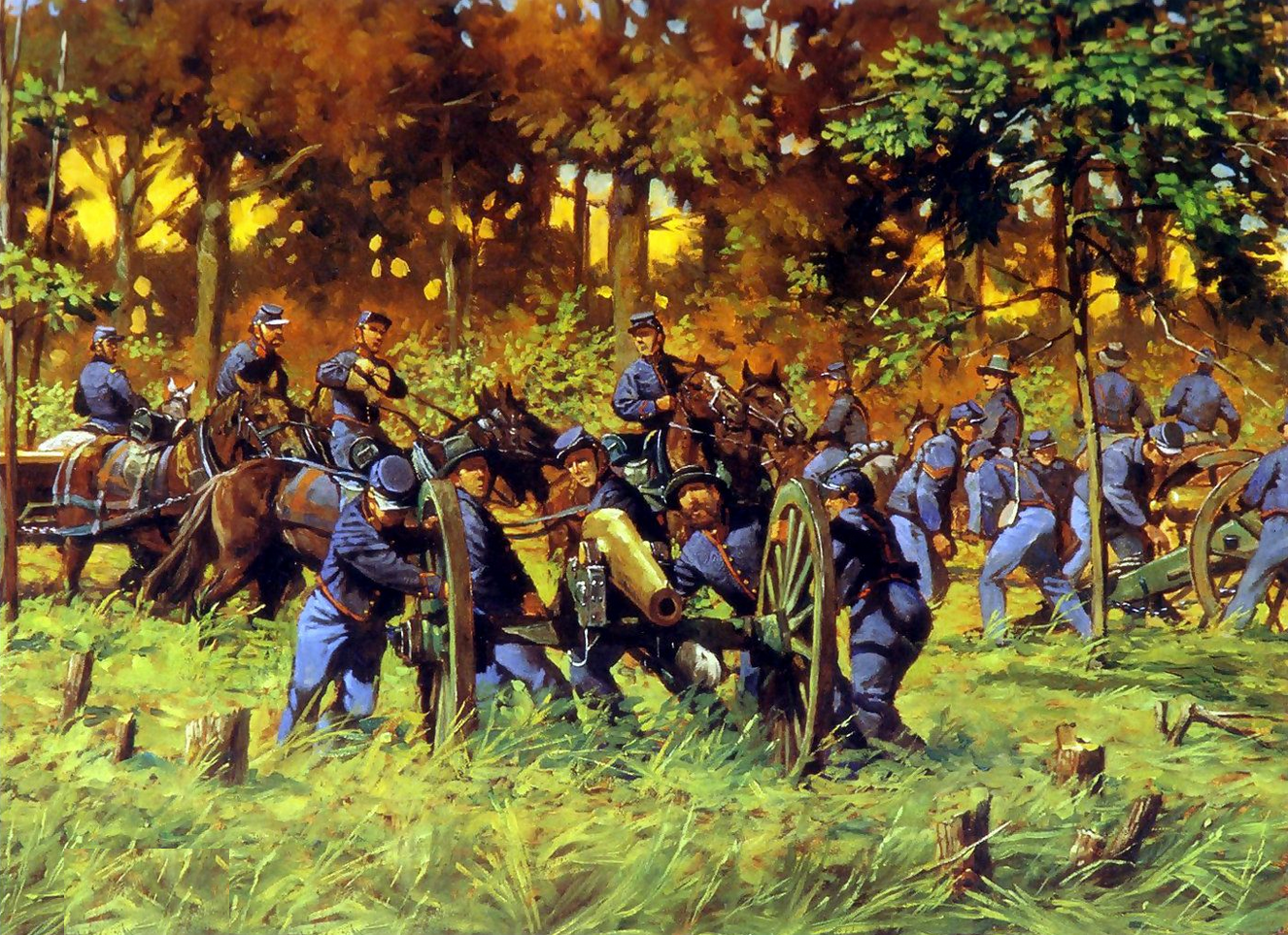

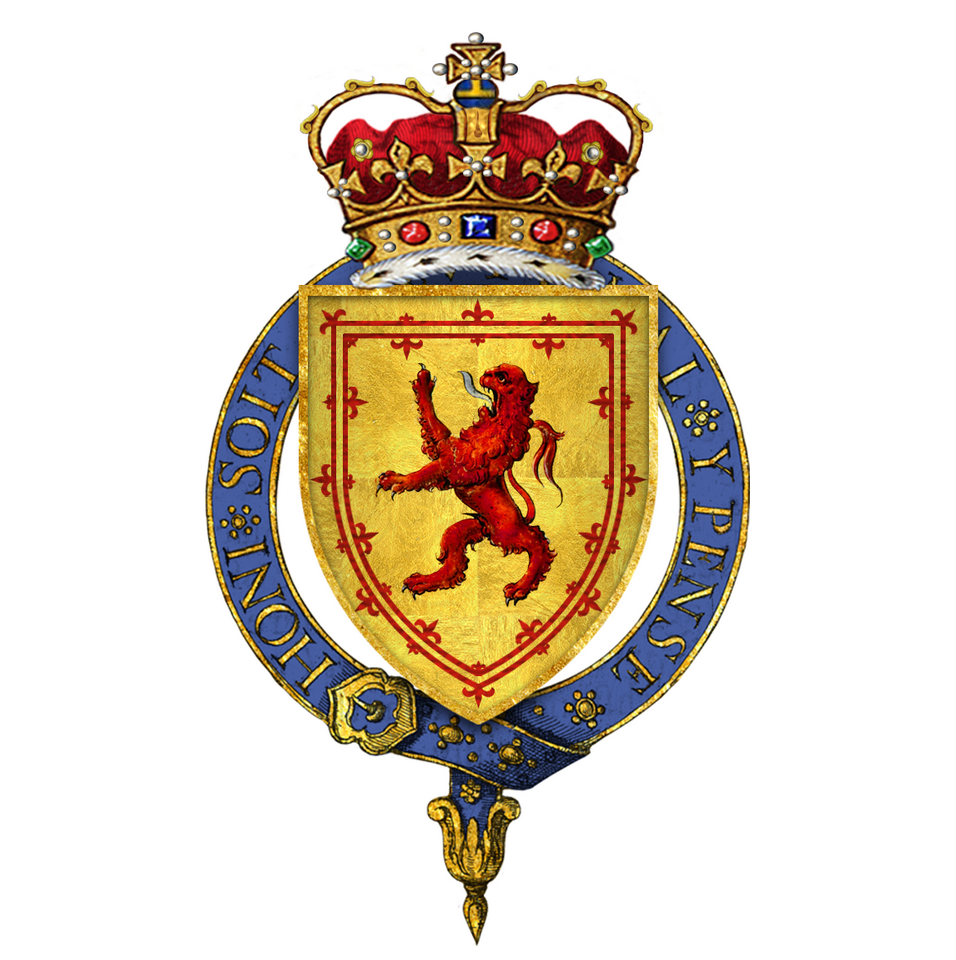


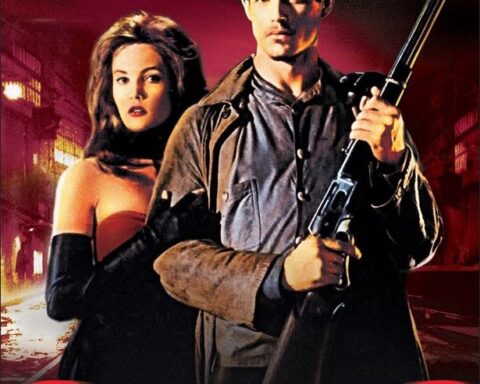
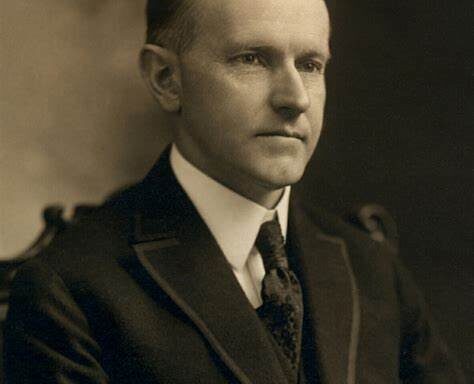
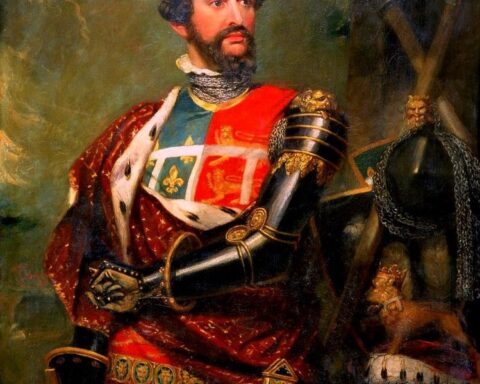
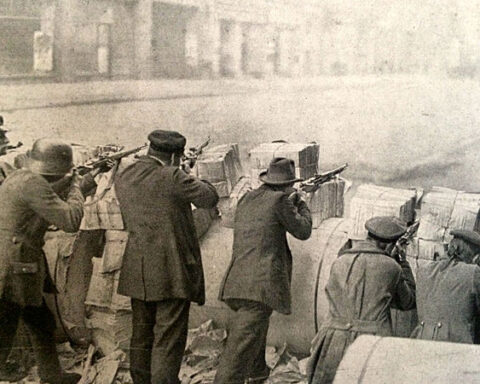
Sort of reminds me of the story of The Sacrifice of 155 Battery (Sidi Nsir 1943)
The Royal 155th was a British 25 pdr battery in North Africa whose final round in the battle was apparently fired at a Tiger tank at a rang of 10…. yards. Just 9 survivors from 130 men.
Ouch.
This guy tells the story well.
https://www.youtube.com/watch?v=fXoP8vL5zJY
While I am, by far, much more sympathetic to the Confederate cause than the Union (and consider Robert E. Lee to be a hero while Lincoln to be an enemy to the Constitution and all free men) I can still dearly appreciate the bravery and passion these men fought with.
God bless their progeny.